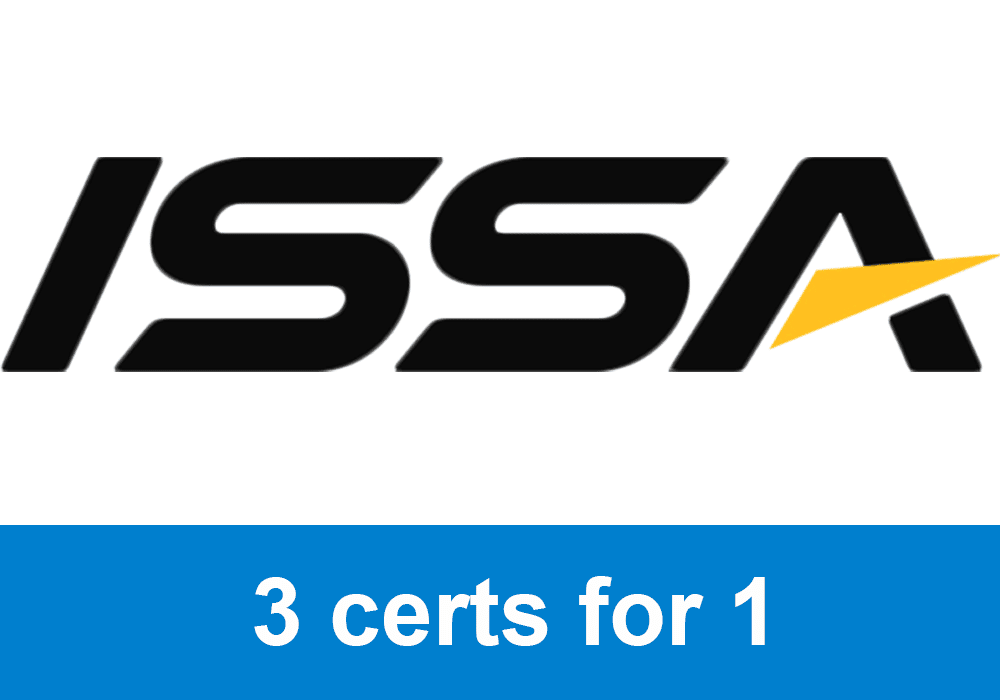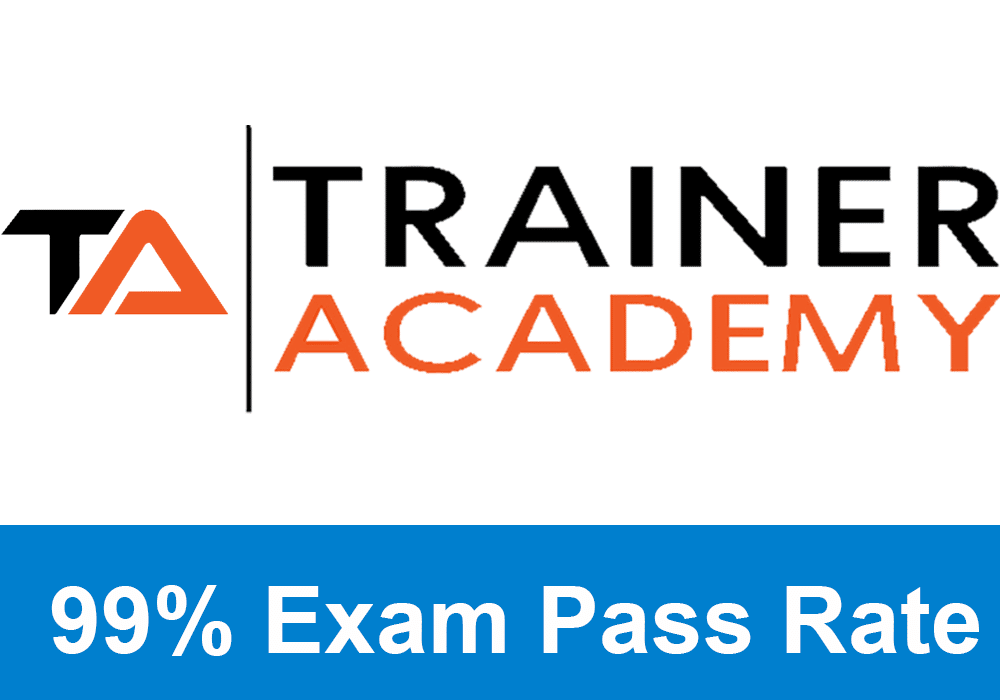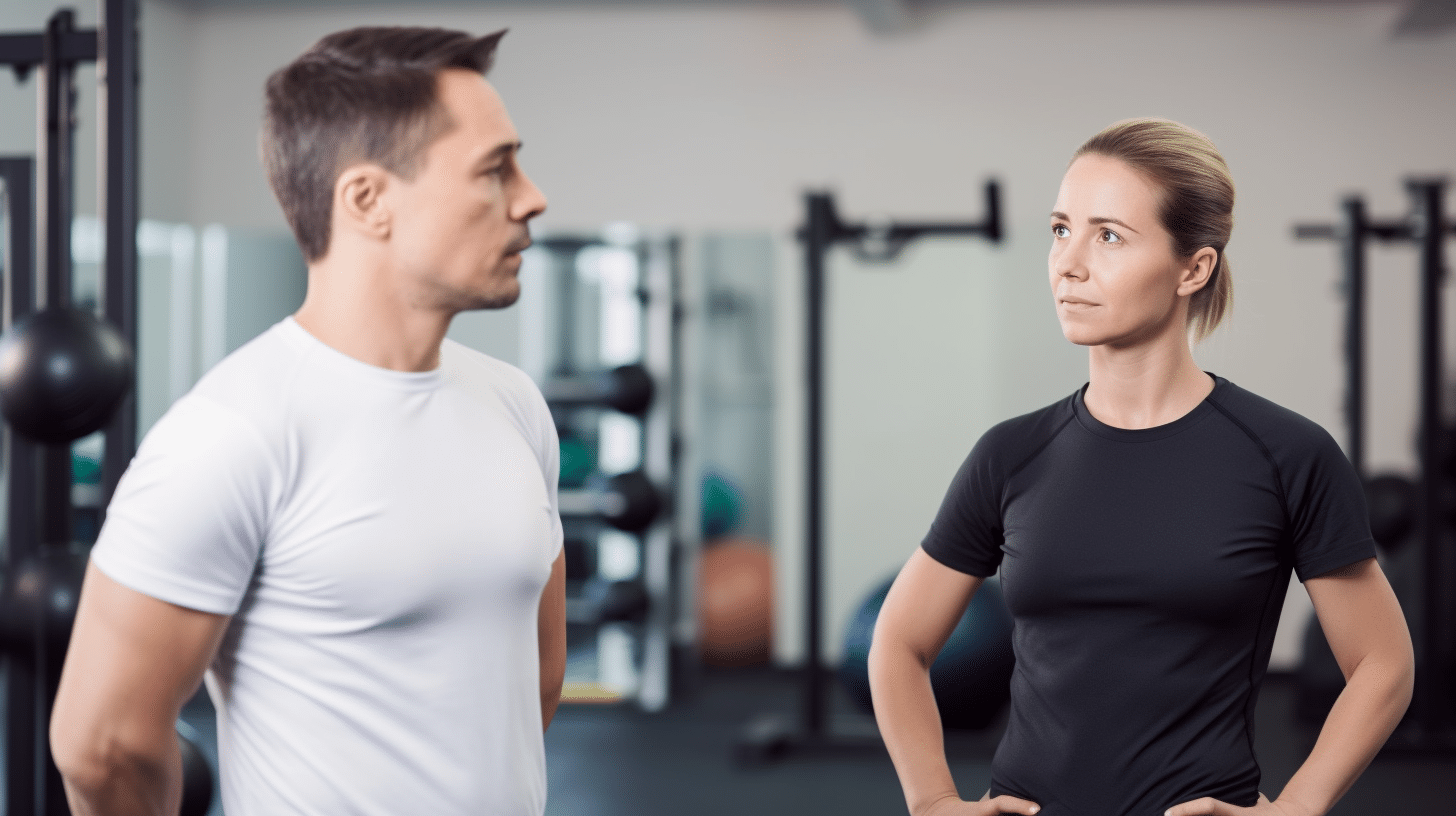
If you have not yet signed up for the NASM CES certification, receive a big discount here.
Get your copy of the NASM CES exam cheat sheet. It helps immensely for studying for the exam.
Make sure to check out Trainer Academy for premium NASM CES study materials. They will reduce study time by 50% and have an exam pass guarantee. Read my full review on them here. You can save $100 on their MVP study system with the code: PTPSUB
Chapter Goals:
- Know the functional anatomy of the thoracic spine and the shoulder.
- Find the mechanisms for common injuries to the thoracic spine and shoulder.
- Describe the influence of alterations in the thoracic spine and shoulder movements in the kinetic chain.
- Find the right strategies for systematic assessment of the thoracic spine and shoulder.
- Be able to choose the best corrective strategies for the thoracic spine and shoulder.
Introduction
The thoracic spine and shoulder allow the upper body to have a great range of mobility.
The thoracic spine is not inherently mobile, and the optimal thoracic spine mobility combines with the scapula and shoulder to give unlimited degrees of freedom.
The shoulder is the most mobile joint that we have in the body. It allows more motion than anything else.
This comes at the cost of also being very vulnerable to injury.
The movements it is capable of will include adduction, abduction, flexion, extension, internal and external rotation, and an allowance for a full 360 degree circumduction in the sagittal plane.
Since the body is an interconnected chain, the limitations of the lower body may affect the upper body or vice versa.
Impairments in the hips and lumbar area are most often seen in this realm, affecting the thoracic spine and shoulder.
Review of Thoracic Spine and Shoulder Functional Anatomy
The shoulder is a synovial ball and socket joint.
We have many similarities between the shoulder and the hip joints. Unlike the hip, the shoulder ball will be in a very shallow joint, hence the instability but greater range of motion.
It is often viewed as a golf ball sitting on a tee.
Instead of relying on bony structures, this ball and tee will rely on the ligaments and muscles to ensure stabilization.
The thoracic spine will run from the base of the neck down to the abs and articulate with the rib cage.
The thoracic spine will be more rigid than the lumbar and cervical spine to protect us from the thoracic viscera.
The thoracic spine can rotate, flex and extend, and laterally flex.
Bones and Joints – Thoracic Spine
There are 12 thoracic vertebrae present as one of the three major spine segments.
The cervical spine is above, and the lumbar spine is below.
The ribs attach to the 12 thoracic vertebrae bilaterally.
Look into the curves of the spine that should be present in the pictures. This shows the optimal layout.
Bones and Joints – Shoulder
The main joint is the shoulder joint, which comprises the humerus fitting into our scapula like a ball and socket.
The clavicle is another bone that helps make the sternoclavicular joint and the acromioclavicular joint.
The function of the Scapula
The shoulder blade is an attachment for the upper arm and back muscles.
With the clavicle, they come together to make the shoulder girdle, connect the humerus, and make the glenohumeral joints. Pay attention to the look and layout of the bones in this system through the photos.
The glenohumeral joint is the main shoulder joint and it allows for a great range of motion and mobility, with a sacrifice made in stability.
Exclusive PTP CPT Offers |
||
|---|---|---|
Gold Standard Cert | Most Popular Cert | Best Study Materials |
A Good Option | A Good Option | Best CPT for you?  |
The joint relies on the use of static and dynamic stabilizers to stabilize and give motion.
The scapulothoracic joint is not an actual joint but is formed on the convex surface of the posterior thoracic cage and the concave part of the scapula.
The sternoclavicular joint is the only boney connection between the scapula and any part of the axial skeleton.
Muscles
We have many muscles that associate with the shoulder joint. Some of these will be major parts of dynamic stability, like the rotator cuff muscles.
The main muscles to know are the supraspinatus, subscapularis, infraspinatus, teres major, teres minor, the three parts of the deltoid, the rhomboid major, minor, the whole trapezius, and the serratus anterior.
There are many different parts and movements to note with all of these muscles. A lot is going on for movements with these muscles.
Altered Thoracic Spine and Shoulder Movement
The ability to perform the many movements in the shoulder can lead to many acute and cumulative injuries occurring.
Shoulder pain and dysfunction are very prevalent and have underlying pathologies, and come with a very high cost for society.
The prevalence of these problems is somewhat close to 16 and 26% of the population.
Static Malalignments
The human spine has its natural S curve, which is easily seen when viewed from the side. The thoracic spine has a gentle outward curve that we look for.
Abnormalities of the spine, like that of scoliosis, can affect the body’s ability to give a proper surface for the scapula and alter the activity of the muscles in the shoulder, neck, lower back, and upper limbs.
Muscle imbalances in the sides of the spine have shown as big strength differences when comparing sides.
The common symptoms that come with scoliosis include:
- One shoulder blade is higher than the other.
- One shoulder blade will stick out more than the other.
- Uneven hips are present.
- A rotation of the spine.
- Problems breathing due to reductions in the area for the chest and lungs to expand.
- Back pain is present.
Abnormal Muscle Activation Patterns
Rounding of the shoulder can result from bad posture, increases in thoracic kyphosis, muscle weakness, muscle tightness, or any combo that can be classified as an upper crossed syndrome.
In that static observation, the back muscles of the neck and the shoulder become overactive and strained.
The muscles in the front of the chest get shortened and tight along with the latissimus dorsi, and that causes rotation internally with the humerus. The surrounding muscles will then get weak due to underuse.
Dynamic Malalignment
In dynamic movements like throwing, hitting, and serving, we see them occur due to integrated, multisegmented, sequential joint motion and muscle activation.
We refer to this as the kinetic chain.
Proper use of the kinetic chain allows max force to develop at the legs and hips through to the core, which is transferred to the arm.
For tasks to be effective and efficient, the body segments need to have optimal levels of flexibility and strength.
Thoracic Spine and Shoulder Dysfunction and the Regional Interdependence Model
Like with the hips causing knee and ankle pain, dysfunctions of the thoracic spine can cause issues to joints and regions above and below the area.
These areas are the scapula, neck, shoulder, elbow, and wrist.
Influences Above the Shoulder and Thoracic Spine
Many studies have seen the use of thoracic spine mobilization versus specific cervical spine therapy to treat people’s neck dysfunction.
All studies using multiple interventions combined with thoracic mobilization found improvements in function and decreases in disabilities.
Influences Related to the Shoulder and Thoracic Spine
Some added effects on the shoulder girdle after thoracic mobilization includes increased mid-trap activity in people with rotator cuff tendinopathy and increased strength in the lower trap strength in asymptomatic people.
There is also a relationship between shoulder dysfunction and reduced upper thoracic spine mobility.
Injuries Below the Shoulder and Thoracic Spine
The lumbar spine has around 10 – 12 degrees of rotation in total.
The thoracic spine contributes to 45 – 60 degrees of rotation.
Exclusive PTP CPT Offers |
||
|---|---|---|
Gold Standard Cert | Most Popular Cert | Best Study Materials |
A Good Option | A Good Option | Best CPT for you?  |
If the thoracic spine is not rotating well, the body allows the lumbar spine to make up this difference.
Many injuries to the lumbar spine occur in the L5 and L4 areas.
These cannot move much and compensate for the vertebrae above them.
Assessment Results for the Shoulder and Thoracic Spine
Due to the extreme freedom of the shoulder to move, the limitation in the contact surface, and the regional interdependence with the LPHC and cervical spine, key static positions and movement impairments find dysfunction in the shoulder.
Know the possible results of the various types of assessments that you may find.
Static Posture
The postural distortion patterns that make up the possible dysfunction in the shoulder and thoracic spine will include upper crossed and layered crossed syndromes and the flat back, sway back, and kyphosis lordosis postures.
All of these have the thoracic spine having a form of kyphosis excessively.
This back rounding is caused by a combination of overactive lats and pec minor muscles paired with underactive shoulder and scapula muscles.
The same ones that cause the static posture problems will be the same ones that cause the arms to go forward in the overhead squat.
Transitional Movement Assessments
The transitional movement assessments highlighting the shoulder kinetic chain checkpoint impairments will be the overhead squat, the hands on hips modified overhead squat, and the evaluation of the loaded push, pull, and overhead press primary movement patterns.
Overhead Squat Assessment
Due to the arms overhead requiring significant mobility in the glenohumeral joint, an extension of the thoracic spine, and stability for the shoulder girdle, many of the main impairments will be found in the overhead squat.
The arms falling forward are seen in clients that lack optimal shoulder mobility.
Please take a look at the picture to see how this looks when it happens in the overhead squat.
Loaded Movement Assessments
The standing cable press and row exercises done with a light and still challenging resistance are important to see the client’s posture when doing these primary movement patterns.
The scapula is one of the things that should get the most attention.
Dynamic Movement Assessments
The davies test uses repetitive plyometric movements of the upper body. It tests the stabilization and dynamic posture of the shoulder in a more complex situation than the overhead squat and loaded primary movement patterns.
Take a look at the pictures to see how the davies test looks when done.
Mobility Assessments
The shoulder and the thoracic spine mobility can be seen with the shoulder flexion test, shoulder retraction test, and shoulder external and internal rotation test. Flexibility in the shoulder and extensor group considerably impacts how the glenohumeral joint is positioned. This is again shown with the arms falling forward.
Corrective Exercise Strategies for the Thoracic Spine and Shoulder
The phases and the muscles that are common for the corrective exercise programming of the thoracic spine and shoulder are:
The inhibit phase is first and it has us using SMR on muscles such as the latissimus dorsi, pec major and minor, upper traps, biceps brachii, posterior capsule, and the thoracic spine.
And you will follow the guidelines in the chapter that covered this phase specifically.
The Lengthen phase will have us use static stretching or NMA on the latissimus dorsi, pec major, pec minor, biceps brachii, upper traps, and the posterior capsule or post deltoid.
And you will follow the guidelines in the chapter that covered this phase specifically.
The activation phase will use isolated strengthening with exercises such as the cobra, ball combo, push up plus, scaption, and the rotator cuff. And you will follow the guidelines in the chapter that covered this phase specifically.
The integration phase will have us using integrated dynamic movement through the use of two moves: the squat to row and the single leg RDL to PNF pattern. And you will follow the guidelines in the chapter that covered this phase specifically.
Corrective Strategies for Arms Fall Forward:
The inhibit phase has us using SMR for the latissimus dorsi, pectorals, and thoracic spine. And you will follow the guidelines in the chapter that covered this phase specifically.
The lengthening phase will focus on the static stretching of both the latissimus dorsi and the pectorals. And you will follow the guidelines in the chapter that covered this phase specifically.
The activation phase has us using the isolated strengthening for the mod and lower traps, the rhomboids, and the serratus anterior. And you will follow the guidelines in the chapter that covered this phase specifically.
The integration phase uses integrated dynamic movement with the exercise of squatting to row. And you will follow the guidelines in the chapter that covered this phase specifically.
Make sure to follow the steps through the book with the pictures at least so that you can get an idea of how these four steps will go.
Corrective Strategies for the Thoracic Spine and Shoulder with Shoulder Elevation:
The inhibit phase will involve using the myofascial rolling on the pectorals, upper traps, levator scapula, and thoracic spine. And you will follow the guidelines in the chapter that covered this phase specifically.
The lengthening phase focus on the static stretching of the pectorals, upper traps, and the levator scapula. And you will follow the guidelines in the chapter that covered this phase specifically.
The activation phase will isolate us, strengthening our mod and low traps, rhomboids, and the serratus anterior. And you will follow the guidelines in the chapter that covered this phase specifically.
The integration uses the integrated dynamic movement with the use of the exercise single leg RDL w/ PNF pattern. And you will follow the guidelines in the chapter that covered this phase specifically.
Make sure to follow the steps through the book with the pictures at least so that you can get an idea of how these four steps will go.
Corrective Strategies for Scapular Winging:
You will inhibit the pec minor, the upper traps, and the levator scapula. And you will follow the guidelines in the chapter that covered this phase specifically.
Lengthen the pec minor, upper traps, and the levator scapula, with static stretching being the main way. And you will follow the guidelines in the chapter that covered this phase specifically.
Activate with an isolated strengthening of the mid and lower traps, rhomboids, and the serratus anterior. And you will follow the guidelines in the chapter that covered this phase specifically.
Integrate the exercise that is the standing one arm cable chest press. And you will follow the guidelines in the chapter that covered this phase specifically.
Make sure to follow the steps through the book with the pictures at least so that you can get an idea of how these four steps will go.
Common Issues Associated with the Thoracic Spine and Shoulder
There are 14.7 per 1,000 patients that come in with a form of shoulder dysfunction each year.
There are significant rates of these occurrences in the weightlifting, powerlifting, and CrossFit communities.
It is less common to see thoracic spine pain and dysfunction than in other spinal regions.
Shoulder Impingement Syndrome
This refers to the finding of subacromial pathologies like bursitis, partial rotator cuff tears, biceps tendinitis, scapular dyskinesis, tight posterior capsules, and abnormalities in the posture.
This is technically defined as compression of the rotator cuff and the bursa in the subacromial area against the anteroinferior aspect of the acromion and the coracoacromial ligament.
This will lead to pain and weakness in the shoulder joint.
The most affected activity is the overhead movements.
Acromioclavicular Separation
This is frequent among active people.
The clavicle will separate from the scapula.
It is usually from impact injuries in football and rugby or something similar.
Rotator Cuff Strain
These are strains or tears that are due to overuse or acute injury to one of the rotator cuff muscles.
Biceps Tendinopathy
This is present as pain and dysfunction of the tendon around the long head of the biceps.
It is from overuse, tendon impingement, shoulder instability, or some form of trauma.
Frozen Shoulder and Osteoarthritis
This is called adhesive capsulitis, an inflammation that develops in the shoulder and causes stiffness and pain.
It can become severely limiting.
Shoulder Instability
This happens when the head of the humerus is forced from the socket and it causes the structures to lose their rigidity and not hold the humerus in as well as they once did.

 Have a question?
Have a question? 


![NASM OPT Model - Complete [year] Breakdown for Fitness Professionals 9 NASM OPT Model in action - client performing exercises following the NASM OPT model.](https://www.ptpioneer.com/wp-content/uploads/2024/04/NASM-OPT-Model-in-action.png)
![Single Leg Squat Assessment NASM Guidelines for [year] 10 single leg squat assessment - client performing a single leg squat assessment in a fitness setting under trainer supervision](https://www.ptpioneer.com/wp-content/uploads/2024/03/single-leg-squat-assessment-1.png)

![LPHC NASM Breakdown ([year]) - Lumbo-Pelvic Hip Complex Anatomy 12 Lumbo Pelvic Hip Complex - image of fitness client with a focus on the lumbo pelvic hip complex](https://www.ptpioneer.com/wp-content/uploads/2024/03/Lumbo-Pelvic-Hip-Complex.png)
![SMART Goal NASM Breakdown for [year] 13 SMART Goal NASM - trainer and client sitting down in a fitness setting to discuss goals](https://www.ptpioneer.com/wp-content/uploads/2024/03/SMART-Goal-1.png)
![The [year] Guide to the NASM Davies Test 14 NASM Davies Test - client in push up position touching one hand to another](https://www.ptpioneer.com/wp-content/uploads/2024/03/NASM-Davies-Test.png)


Tyler Read
PTPioneer Editorial Integrity
All content published on PTPioneer is checked and reviewed extensively by our staff of experienced personal trainers, nutrition coaches, and other Fitness Experts. This is to make sure that the content you are reading is fact-checked for accuracy, contains up-to-date information, and is relevant. We only add trustworthy citations that you can find at the bottom of each article. You can read more about our editorial integrity here.